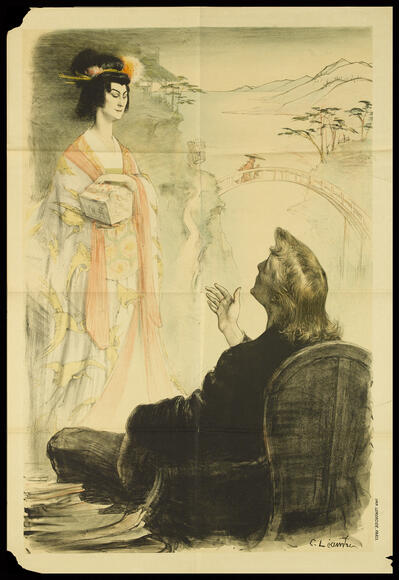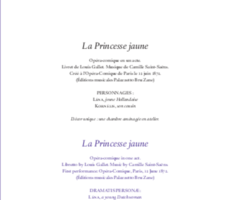La Princesse jaune

Opéra comique in one act, premiered at the Paris Opéra-Comique. Dedicated to Marie-Joseph-Frédéric Villot, curator at the Louvre Museum.
“Japan was very much in vogue, it was all everyone talked about, a real craze; so we had the idea of creating a Japanese piece,” wrote Saint-Saëns about the genesis of La Princesse jaune, some forty years after its premiere. He composed it in 1871. Anxious to see his first drame lyrique, Le Timbre d’argent, performedat the Opéra-Comique, Saint-Saëns had been offered the opportunity to mount a one-act opera by the theatre’s director, Camille du Locle (1832–1903) – after the war, small forms could contribute at a lower cost to the revival of Parisian cultural life. Du Locle put Saint-Saëns in contact with Louis Gallet, and this first collaboration – they would renew the experience several times – gave rise to La Princesse jaune. First performed on 12 June 1872, this subtly Japanese-sounding opéra comique comprises an overture followed by six numbers interspersed with dialogue. The action takes place in Holland. The young Kornélis (tenor), projects all his yearning for love and exoticism onto the portrait of a Japanese woman, ignoring the real love felt for him by Léna, a young Dutch woman. With two solo arias each, the main characters come together in the final two numbers for duet passages that Saint-Saëns described twenty years later as “one of the best things I have ever done in the theatre”. However, a few years earlier he admitted that “this innocent little work was greeted with the most ferocious hostility”. A few days before the first performance, Bizet’s Djamileh was also premiered.
Scientific publications
Publication
Camille Saint-Saëns. La Princesse jaune
Articles


